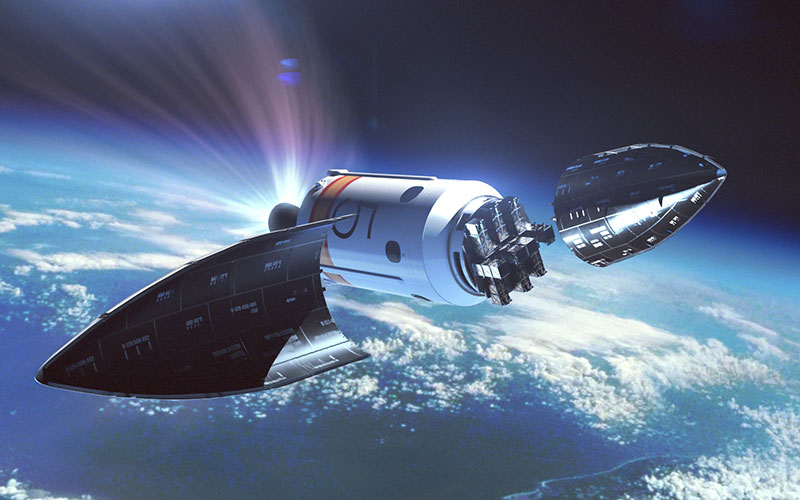
The European Space Agency announced 19 February that it had awarded €1.3 million in co-funding to PLD Space for the development of a modular payload adapter that will be utilized aboard Miura 5.
In 2023, PLD successfully conducted the maiden flight of its suborbital Miura 1 launch vehicle. The company is now working towards the debut of its larger Miura 5 vehicle, which will be capable of deploying payloads of up to 540 kilograms into sun-synchronous orbit. While not initially, PLD does plan to eventually recover Miura 5 first stages with parachutes for reuse in future flights.
The ESA co-funding was awarded to PLD Space and partner OCCAM Space through the agency’s Boost! programme. Adopted by ESA member states in 2019, Boost! aims to foster the development of new competitive European commercial space transportation services. Instead of a broad application, funding through the programme is given for specific, well-defined projects. In the case of PLD Space, the specific project is MOSPA, or Modular Solution for Payload Adapter. The adapter is expected to allow the Spanish launch startup to offer “a wider range of missions and services.”
“PLD space has proven itself with its first launch last year, and we look forward to seeing the experience applied to the Miura 5 launch services development,” said ESA’s Jorgen Bru, “The payload adapter development engaged today was chosen to increase market competitiveness and ensure that many different types of satellites and customers can fly.”
PLD Space will develop MOSPA in collaboration with Madrid-based smallsat separation systems startup OCCAM Space. The goal of the project, according to an ESA announcement, is to develop a system that is as light and adaptable as possible.
The maiden flight of Miura 5 is currently slated for 2025 from the Guiana Space Centre in Kourou, French Guiana.




